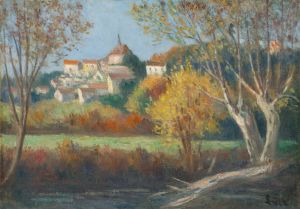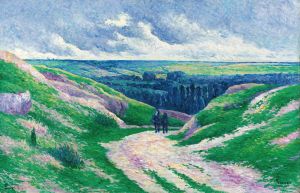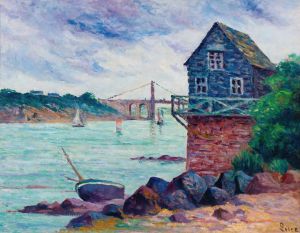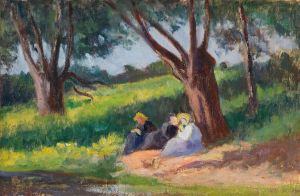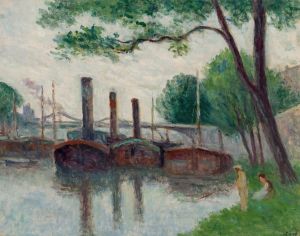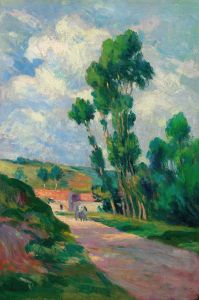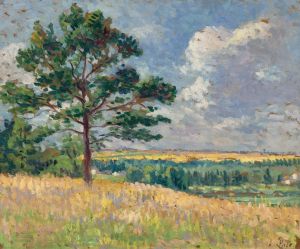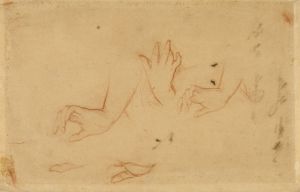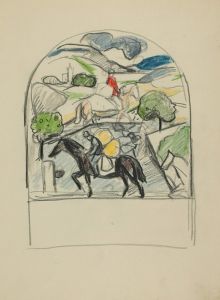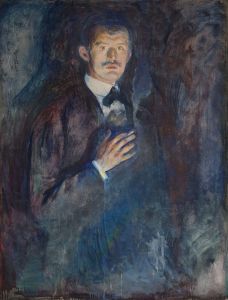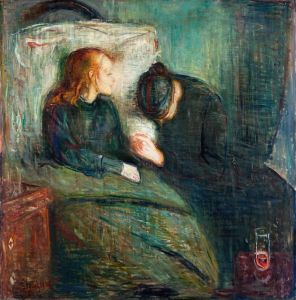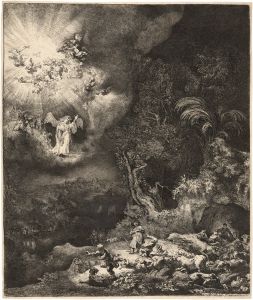
Couillet, La Nuit
A hand-painted replica of Maximilien Luce’s masterpiece Couillet, La Nuit, meticulously crafted by professional artists to capture the true essence of the original. Each piece is created with museum-quality canvas and rare mineral pigments, carefully painted by experienced artists with delicate brushstrokes and rich, layered colors to perfectly recreate the texture of the original artwork. Unlike machine-printed reproductions, this hand-painted version brings the painting to life, infused with the artist’s emotions and skill in every stroke. Whether for personal collection or home decoration, it instantly elevates the artistic atmosphere of any space.
Maximilien Luce (1858–1941) was a French Neo-Impressionist artist known for his paintings, illustrations, and engravings. He was associated with the Pointillist movement, which was characterized by the use of small, distinct dots of color applied in patterns to form an image. Luce's work often depicted scenes of everyday life, industrial landscapes, and urban environments, reflecting his interest in social issues and the working class.
"Couillet, La Nuit" is one of Luce's notable works, painted in 1895. The painting captures a nighttime scene in Couillet, a town in Belgium known for its industrial activity during the late 19th and early 20th centuries. This period was marked by rapid industrialization, and Luce was particularly drawn to the dramatic interplay of light and shadow created by factories and urban settings at night.
In "Couillet, La Nuit," Luce employs the Pointillist technique, using small, precise brushstrokes to create a vibrant and dynamic composition. The painting depicts a factory at night, with smoke billowing from chimneys and artificial lights illuminating the scene. The use of color is particularly striking, with blues and yellows dominating the palette, capturing the contrast between the cool night sky and the warm glow of the industrial lights.
Luce's choice of subject matter reflects his interest in the social and economic changes of his time. The industrial revolution brought significant transformations to European society, and artists like Luce were keen observers of these shifts. By focusing on an industrial town like Couillet, Luce highlights the impact of industrialization on both the landscape and the people who lived and worked in such environments.
The painting is also notable for its atmospheric quality. Luce's use of color and light creates a sense of movement and energy, conveying the bustling activity of the factory even in the stillness of night. This dynamic quality is a hallmark of Luce's work, demonstrating his ability to capture the essence of a scene through careful observation and technique.
"Couillet, La Nuit" is an example of how Luce's art was influenced by his political beliefs. A committed anarchist, Luce often depicted scenes that emphasized the dignity and resilience of the working class. His paintings serve as both artistic expressions and social commentaries, reflecting his desire to shed light on the conditions and experiences of ordinary people.
Today, Maximilien Luce is recognized as an important figure in the Neo-Impressionist movement. His works are celebrated for their technical skill, vibrant use of color, and insightful portrayal of contemporary life. "Couillet, La Nuit" remains a significant piece within his oeuvre, exemplifying his mastery of the Pointillist technique and his engagement with the social issues of his time. The painting is held in high regard by art historians and continues to be studied for its artistic and historical significance.






